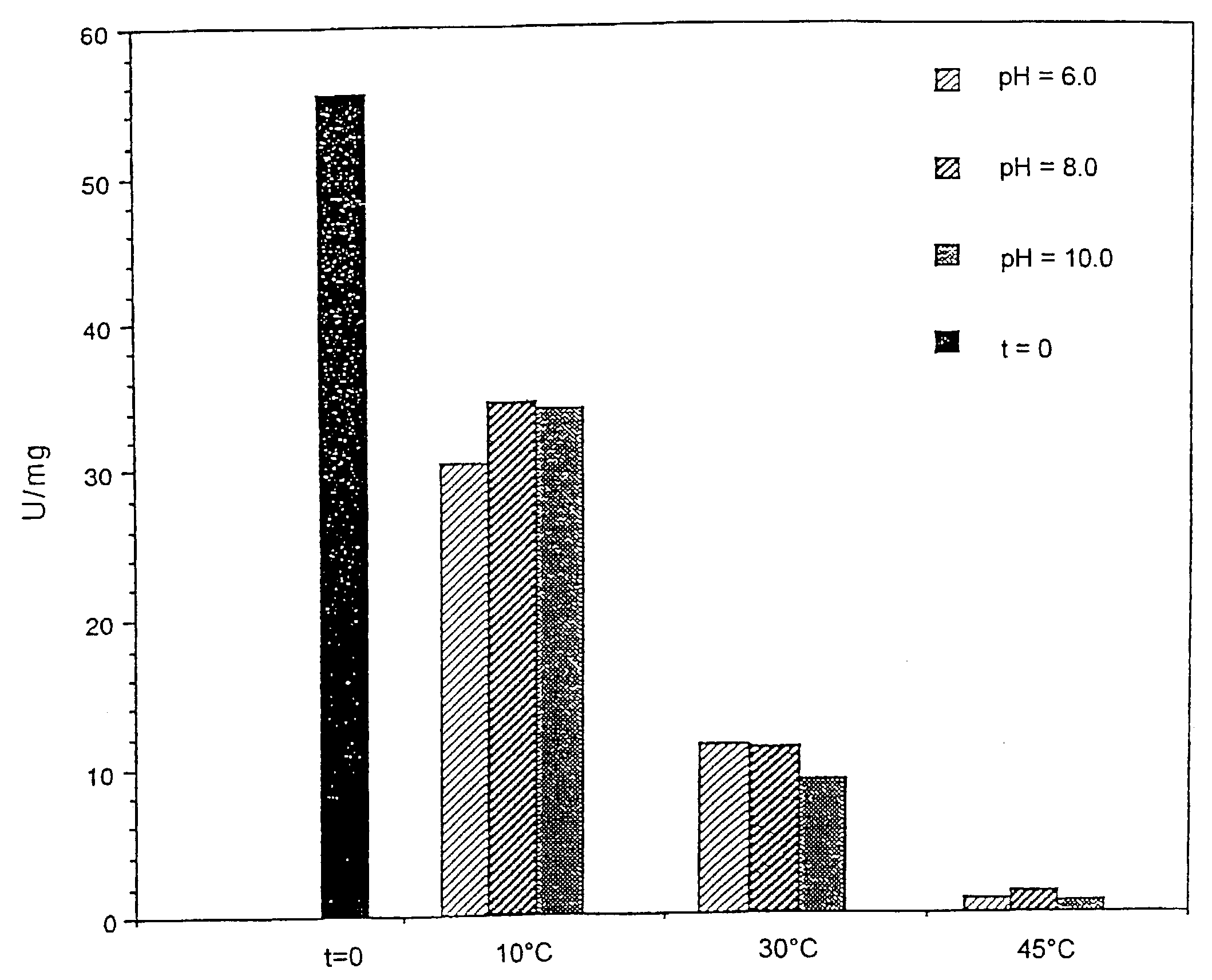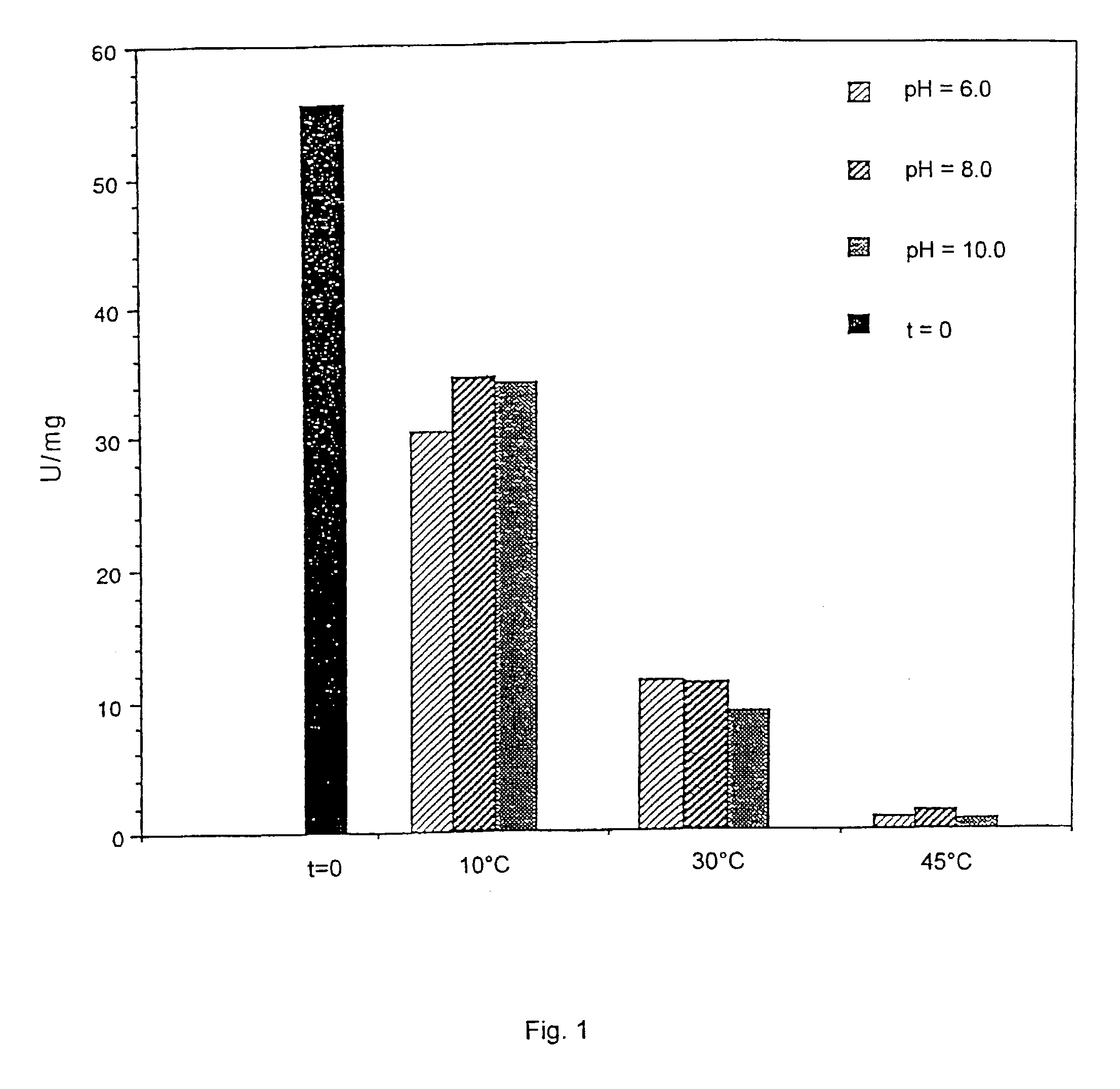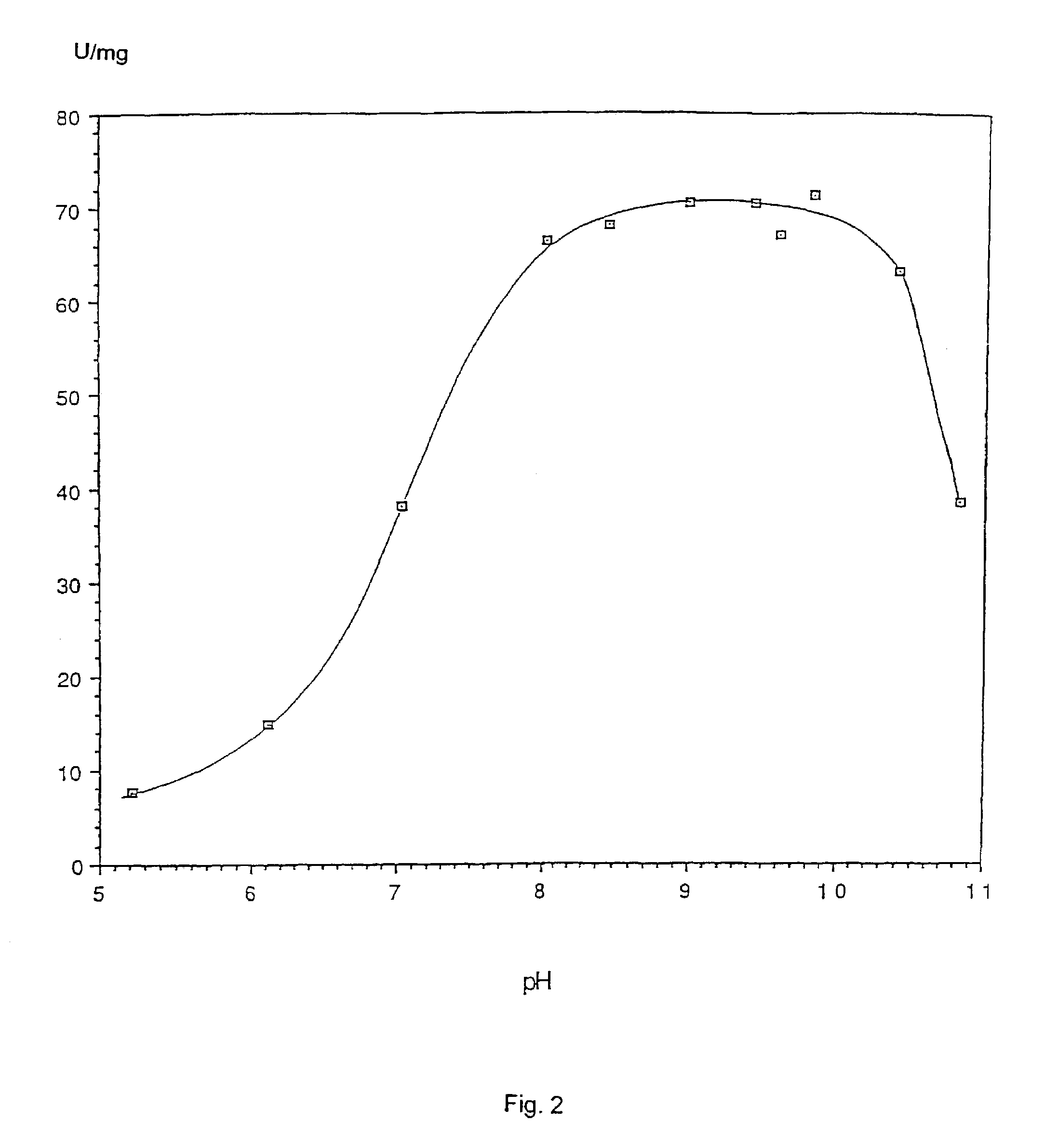Protein hydrolysates produced with the use of cod proteases
a technology of cod proteases and hydrolysates, which is applied in the field of hydrolyzing proteins and protein hydrolysates, can solve the problems of unsatisfactory food products, bitter taste, and preparations that have not been used on a commercial scale for the production of food-grade hydrolysates
- Summary
- Abstract
- Description
- Claims
- Application Information
AI Technical Summary
Benefits of technology
Problems solved by technology
Method used
Image
Examples
example 1
Preparation of a Mixture of Proteases from Cod
[0057]About 100 kg of frozen cod viscera, without liver milt and roe were, thawed and added to a four-fold volume of cold potable water in an extraction tank and the pH adjusted to pH 8 to 9 with a sodium hydroxide solution. The mixture was stirred for about 2–6 hours at 0 to 5° C. After a brief period of crude sedimentation (about 30 minutes) the aqueous extract was run off the remaining insoluble viscera with a pump and collected in a sedimentation tank. The aqueous extract was allowed to stand in the cooled sedimentation tank to sediment for about 24 to 60 hours. The supernatant was decanted from the supernatant tank to a holding tank using a pump. The supernatant was concentrated 10 to 20-fold by ultrafiltration and diafiltered to an acceptable level of ionic strength with conductivity below about 3 mS / cm. About 10–15 liters of ultrafiltratered and diafiltered protease preparation was obtained and referred to as Cryotin. The protease...
example 2
Purification of Cod Elastase and Cod Serine Collagenases from Concentrated Cod Viscera Extract
[0059]About 10–15 liters of ultrafiltratered and diafiltered concentrate as obtained in Example 1 was applied to a couple of 1 liter packed chromatography columns connected in a series, the first containing a CM fast flow cation exchange resin (Pharmacia, Sweden), and the second one a DEAE fast flow anion exchange resin (Pharmacia, Sweden) The columns were pre-equilibrated with about 10 column volumes of 25 mM Tris buffer of pH 7.8, containing 2.5 mM calcium chloride (buffer A). The concentrate was pumped onto the columns at a flow rate of about 100 ml per minute. When the application of the concentrated solution onto the columns was completed, residual material was washed off the continuous column system with about 8 L of buffer A. The flow through fraction containing trypsin, chymotrypsin and the exopeptidases is collected and termed Cryotin X.
[0060]After this wash was completed, the colu...
example 3
Hydrolysis and Release of Protein and Proteinaceous Material from Shrimp Shells using Cryotin
[0061]Shrimp shells and water were mixed together in the ratio of about 1:0.75 (w / w), by adding 3000 g of shrimp shells to 2250 g of water. An aliquot of 130 ml of Cryotin enzyme mixture of Example 1 containing 1.4 U / ml (BAPNA units), i.e. a total of 182 units per the 3000 g of shrimp shells, or about 0.06 BAPNA hydrolyzing units per gram of shrimp shells. This mixture was reacted by stirring it in a rotating drum for 5 hours at a speed of 40 cycles per minute at room temperature (about 20° C.). The solution fraction was separated from the solid residue by filtration through a course sieve followed by cheesecloth filtration. During the course of the 5-hour reaction-time samples were taken from the reaction mixture for monitoring the reaction. For comparative purposes the reaction was repeated with the same materials except 130 ml of water was added instead of the Cryotin enzyme mixture, and ...
PUM
| Property | Measurement | Unit |
|---|---|---|
| Temperature | aaaaa | aaaaa |
| Temperature | aaaaa | aaaaa |
| Temperature | aaaaa | aaaaa |
Abstract
Description
Claims
Application Information
 Login to View More
Login to View More - R&D
- Intellectual Property
- Life Sciences
- Materials
- Tech Scout
- Unparalleled Data Quality
- Higher Quality Content
- 60% Fewer Hallucinations
Browse by: Latest US Patents, China's latest patents, Technical Efficacy Thesaurus, Application Domain, Technology Topic, Popular Technical Reports.
© 2025 PatSnap. All rights reserved.Legal|Privacy policy|Modern Slavery Act Transparency Statement|Sitemap|About US| Contact US: help@patsnap.com



